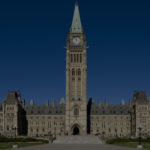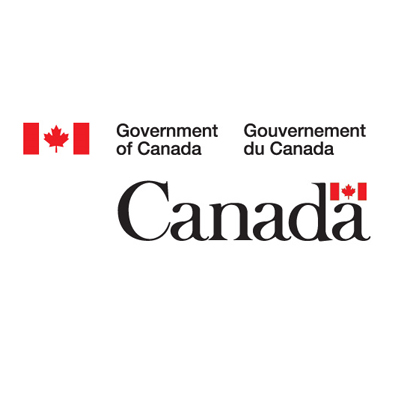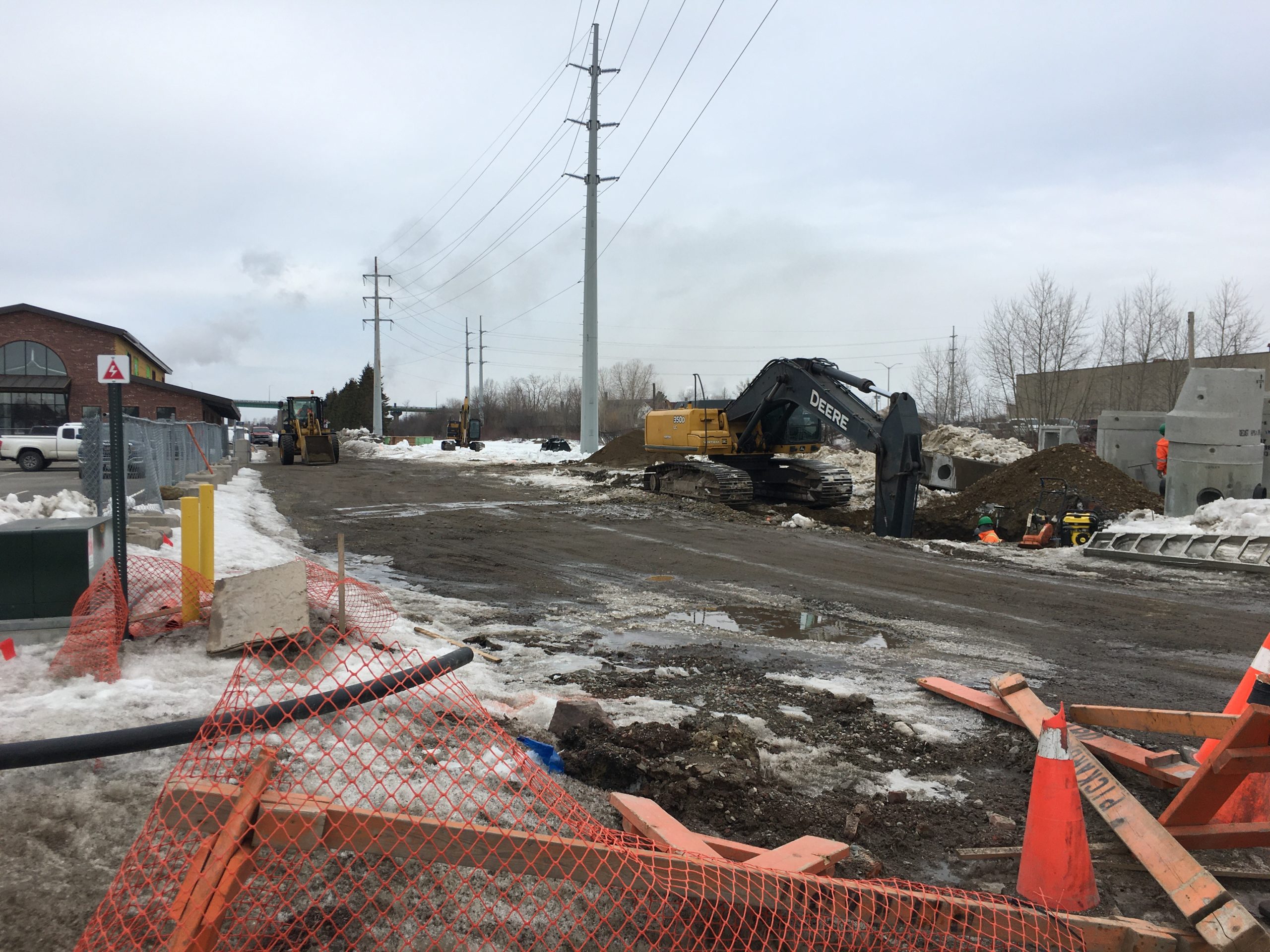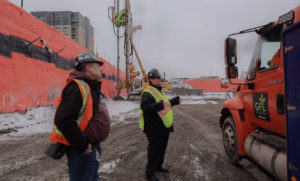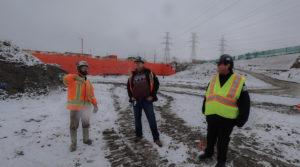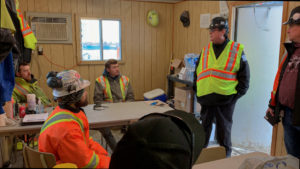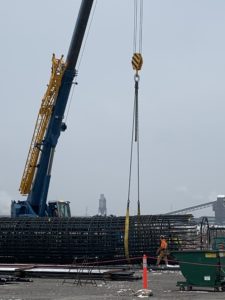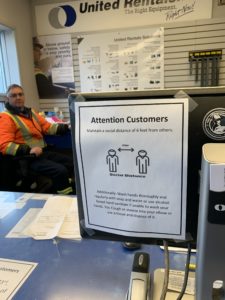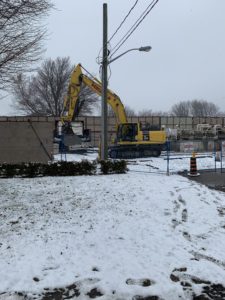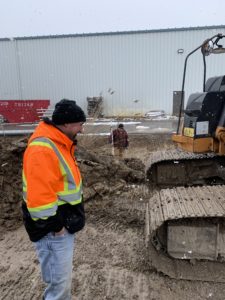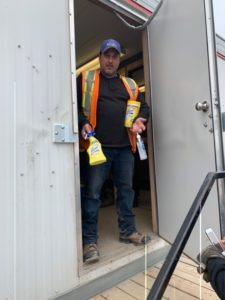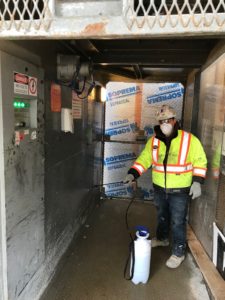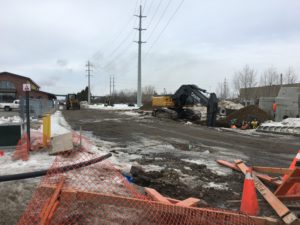Pam Damoff, MP for Oakville North-Burlington and Effie Triantafilopoulos, MPP for Oakville North-Burlington share a joint update (March 23-27) regarding COVID-19 and how the Government of Canada and the Government of Ontario are supporting Canadians during this pandemic. Also, below is the Ontario Action Plan: Responding to COVID-19, which includes $7 billion in additional resources for the health care system and direct support for people and jobs. ___________________________________________ Joint ONB Weekly Update: March 23-27 Pam Damoff, MP for Oakville North-Burlington and Effie Triantafilopoulos, MPP for Oakville North-Burlington are addressing constituents […]
Pam Damoff, MP for Oakville North-Burlington and Effie Triantafilopoulos, MPP for Oakville North-Burlington share a joint update (March 23-27) regarding COVID-19 and how the Government of Canada and the Government of Ontario are supporting Canadians during this pandemic.
Also, below is the Ontario Action Plan: Responding to COVID-19, which includes $7 billion in additional resources for the health care system and direct support for people and jobs.
___________________________________________
Joint ONB Weekly Update: March 23-27
Pam Damoff, MP for Oakville North-Burlington and Effie Triantafilopoulos, MPP for Oakville North-Burlington are addressing constituents today in a joint update regarding COVID-19. Constituents have questions about how the Government of Canada and the Government of Ontario are supporting Canadians during this Pandemic. MP Damoff and MPP Triantafilopoulos are working in collaboration and with their municipal partners to make sure that the residents of Oakville North-Burlington are informed about initiatives being implemented by all levels of government through one accessible update. MP Pam Damoff and MPP Triantafilopoulos are speaking regularly, coordinating our efforts to protect the health and wellbeing of the people of Oakville North-Burlington. MP Damoff and MPP Triantafilopoulos will be releasing a joint update every Friday for the duration of the COVID-19 crisis.
For information about COVID-19, please visit:
Canada: www.canada.ca/coronavirus
Ontario: www.ontario.ca/coronavirus
Halton Region: www.halton.ca/COVID19
UPDATE FROM PARLIAMENT HILL
Our government has been responding to the COVID-19 crisis and this week passed legislation to support Canadians during this unprecedented crisis.
The legislation will see $52 billion of direct relief and $55 billion in tax deferrals for Canadians. This legislation includes the following initiatives, amongst others:
- The Canada Emergency Response Benefit to provide $500 per week to Canadians who lose income due to COVID-19. This is a simpler more streamlined benefit comprising both the care and support streams announced on March 18, 2020.
- An increase to the Canada Child Benefit by $300 per child for the 2019-20 benefit year.
- A special payment under the GST credit to low- and modest-income families.
- A reduction of the minimum Registered Retirement Income Fund (RRIF) withdrawal to help protect seniors’ retirement savings.
- A temporary wage subsidy for three months to eligible Small and Medium Sized businesses.
- Measures to prevent shortages of patented drugs or medical devices.
- A pause on the repayment of Canada Student Loans for six months.
- Support provinces and territories with a COVID-19 Response Fund including one-time funding of $500 million through the Canada Health Transfer
- Additional Flexibility to support businesses as necessary through the EDC, BDC, Farm Credit Canada and the Canada Count.
MP Damoff is providing Oakville North-Burlington with regular updates via email and social media. Residents can sign up at www.mpdamoff.ca
Canada Emergency Response Benefit
The Canada Emergency Response Benefit was introduced this week and will provide $2,000 a month, for the next 4 months, for workers who lose their income as a result of COVID-19. If you have lost your job because of COVID-19 – whether you’re full-time, contract, or self-employed –this new benefit is there for you. If you are sick or quarantined, looking after someone sick, or at home taking care of your kids – it’s there for you. And even if you’re still employed, but not receiving income because of this crisis – the Canada Emergency Response Benefit is there for you.
The Government is aiming to launch the application portal for this new benefit on Monday, April 6th. People should start receiving money within 10 days of applying. As more information is released about the portal and the application process
While details are still being finalized, at the present time the benefit will be available to workers residing in Canada, who are at least 15 years old, and who:
- have earned at least $5,000 in 2019 or in the year prior to their application from any or a combination of the following sources: employment, self-employment, Employment Insurance maternity and parental benefits, and/or similar benefits paid in Quebec under the Quebec Parental Insurance Plan (QPIP); and
- are without employment or self-employment income for at least 14 consecutive days in a four-week period, for reasons related to COVID-19, including if they have temporarily stopped working, lost their job, are sick or in quarantine, or need to care for a child or a family member.
If you have already applied for EI related to the loss of your income due to the spread of COVID-19, It is important to note that you do not need to reapply for this new benefit. The benefit will be applied retroactively to March 15th and will end on October 3rd, 2020. As new information about the application process becomes available, it will be shared via social media and on her website.
It is also important to note that this benefit will stack with the other measures that the government announced last week. The Canada Child Benefit will still be boosted. The special top-up payment under the Goods and Services Tax (GST) credit will still help the most vulnerable. Click here to see Canada’s COVID-19 Emergency Response Plan.
Support for Business
Small and Medium Sized Businesses are the backbone of our economy. Entrepreneurs and business owners have had to make difficult decisions to let employees go and close their doors. People are struggling to get by, that is why the Federal Government has implemented further supports to help Small and Medium Sized Businesses.
The Government of Canada will be increasing the 10% wage subsidy for Small and Medium Sized Businesses, as well as Not-For-Profits to 75%, so business owners can keep employees on the pay roll even if business has slowed down. The subsidy will be backdated to March 15th, details about the subsidy will be released in the coming days.
Businesses are also struggling with cashflow, because of this, our government has launched the Canada Emergency Business Account. This is a guaranteed loan of $40,000 offered by Banks to qualifying businesses. This loan will be interest free in the first year, and depending on certain conditions, $10,000 will be forgivable. There will also be an additional $12.5 billion allocated to Small and Medium Sized Businesses for cash flow purposes through Export Development Canada and the Business Development Bank. Businesses will be able to apply to their financial institution for a guaranteed loan to deal with the impacts of COVID-19.
We will also be helping businesses to keep money that would otherwise be sent to the Canadian government, by deferring GST/HST payments, as well as duties and taxes owed on imports until June 2020. This is the equivalent of a $30 billion interest free loan to businesses.
Small and Medium Sized Businesses and Not-For-Profits are essential parts of our economy. When they struggle, our community struggles. It is important that the federal government takes strong fiscal action so employees and employers can make ends meets during this global pandemic.
Quarantine Act
On Wednesday the Government of Canada implemented the Quarantine Act to mandate that any person entering Canada by air, sea or land self-isolate for 14 days regardless of whether or not they have symptoms of COVID-19.
The order mandating self-isolation is now fully implemented by the Canada Border Services Agency (CBSA) at points of entry. The Government of Canada will use its authority under the Quarantine Act to ensure compliance with the order. Failure to comply with this Order is an offense under the Quarantine Act. Maximum penalties include a fine of up to $750,000 and/or imprisonment for six months. Further, a person who causes a risk of imminent death or serious bodily harm to another person while wilfully or recklessly contravening this Act or the regulations could be liable for a fine of up to $1,000,000 or to imprisonment of up to three years, or to both. Spot checks will be conducted by the Government of Canada to verify compliance.
All individuals permitted to enter Canada are subject to this Order, with the exception of certain persons who cross the border regularly to ensure the continued flow of goods and services, and those who provide essential services. Individuals exempt from the Order will still need to practice social distancing and self-monitoring and contact their local public health authority if they feel sick. To aid people and businesses who are engaging in essential trade and services the CBSA has launched an information service line which is available 24/7. For the most up-to-date information related to cross border travel and business, please call 1-800-461-9999.
Individuals displaying symptoms of COVID-19 after arriving in Canada may not use public transportation to travel to their place of isolation. They also may not isolate in a place where they will be in contact with vulnerable people, such as seniors and individuals with underlying health conditions.
UPDATE FROM QUEEN’S PARK
The emergency declaration issued by the Ontario Government continues and the number one priority of the government right now is ensuring that our frontline health care professionals have the resources they need to fight the COVID-19 (Coronavirus) pandemic. We should all pay tribute to their hard work and sacrifice in keeping our families safe. While supporting our health services, we are working to ensure that people and jobs are protected as much as possible, and that businesses have the cash flow they need to get through the coming months. In total, the Ontario Government has committed to a $17 billion response including increased resources for health care and direct support for people and jobs.
We will work to ensure that health care, communities and the economy can face the challenges ahead. The plan dedicated $1 billion COVID-19 contingency fund, as part of the additional health care investments, as well as an unprecedented $2.5 billion reserve and an increased contingency fund of $1.3 billion to provide continued flexibility to respond to changing global circumstances. These additional resources will enhance hospital capacity, protect our loved ones in long-term care and support our public health teams working to flatten the curve.
Sign up for regular updates via email HERE
You will find details of our Action Plan below:
HEALTH CARE INVESTMENTS
- Committing to a dedicated $1.0 billion COVID-19 contingency fund for emerging needs related to the COVID-19 outbreak.
- Investing $935 million for the hospital sector, including $594 million to accelerate progress on the government’s commitment to address capacity issues, as well as $341 million for an additional 1,000 acute care beds, 500 critical care beds and over 70 additional assessment centres.
- Increasing public health funding by $160 million to support COVID-19 monitoring, surveillance, and laboratory and home testing, while also investing in virtual care and Telehealth Ontario.
- Investing $243 million for surge capacity in the long-term care sector, as well as funding for 24/7 screening, more staffing to support infection control, and supplies and equipment to help tackle the COVID-19 outbreak.
- Investing $75 million to supply personal protective equipment and critical medical supplies to front-line staff to tackle COVID-19.
Emergency Child Care for Frontline Health Workers
Providing emergency childcare options to support parents working on the front lines, such as health care workers – nurses, personal support workers, doctors, and police officers, firefighters and correctional officers Investment of $3 million a day.
PROTECTING PEOPLE AND JOBS
Supporting Families and Seniors
- Helping families pay for the extra costs associated with school and daycare closures during the COVID-19 outbreak by providing a one-time payment of $200 per child up to 12 years of age, and $250 for those with special needs, including children enrolled in private schools.
- Doubling the Guaranteed Annual Income System (GAINS) payment for low-income seniors for six months.
- Providing $9 million in direct support to families for their energy bills by expanding eligibility for the Low-income Energy Assistance Program (LEAP) and ensuring that their electricity and natural gas services are not disconnected for nonpayment during the COVID-19 outbreak.
- Expanding access to the emergency assistance program administered by Ontario Works to provide $52 million in financial support to people facing economic hardship and help more people meet basic needs such as food and rent during this public health emergency
Supporting Students by OSAP deferral
- Providing six months of Ontario Student Assistance Program (OSAP) loan and interest accrual relief for students, leaving more money in people’s pockets.
Off-Peak Electricity Rates for Families, Farms & Small Business
- Supporting more affordable electricity bills for eligible residential, farm and small business consumers, by providing approximately $5.6 billion for electricity cost relief programs in 2020-21, which is an increase of approximately $1.5 billion compared to the 2019 Budget plan.
- Further supporting more affordable electricity bills by setting electricity prices for residential, farm and small business time-of-use customers at the lowest rate, known as the off-peak price, 24 hours a day for 45 days to support ratepayers in their increased daytime electricity usage as they respond to the COVID-19 outbreak, addressing concerns about time-of-use metering.
Support for Charitable and Non-profit Organizations
- Enhancing funding by $148 million for charitable and non-profit social services organizations such as food banks, homeless shelters, churches and emergency services to improve their ability to respond to COVID-19, by providing funding directly to Consolidated Municipal Service Managers and District Social Service Administration Boards who would allocate this funding based on local needs.
Support for Indigenous Peoples
- Making available $6 billion by providing five months of interest and penalty relief for businesses to file and make payments for the majority of provincially administered taxes; this will add flexibility to 100,000 small and medium size businesses.
- Making available $1.9 billion by the Workplace Safety and Insurance Board (WSIB) allowing employers to defer payments for up to six months.
- Helping to support regions lagging in employment growth with a proposed new Corporate Income Tax Credit, the Regional Opportunities Investment Tax Credit
Business Support & Cutting Taxes for 57,000 employers
- Cutting taxes by $355 million for about 57,000 employers through a proposed temporary increase to the Employer Health Tax (EHT) exemption (90% of private sector will not pay employer taxes).
Flexibility for Municipalities on Education Property Tax
- Over $1.8 billion by deferring the upcoming June 30 quarterly municipal remittance of education property tax to school boards by 90 days, which will provide municipalities the flexibility to, in turn, provide property tax deferrals to residents and businesses, while ensuring school boards continue to receive their funding.
Sincerely,
Pam and Effie.
___________________________________________
Ontario’s Action Plan: Responding to COVID-19
March 25, 2020 4:00 P.M.
Premier Ford and Minister Phillips Announce Additional Health Care Resources and Support for People, Jobs and Employers
TORONTO — Today (March 25, 2020), Finance Minister Rod Phillips released Ontario’s Action Plan: Responding to COVID-19 (March 2020 Economic and Fiscal Update).
The government’s action plan is a first step in its response to COVID-19 and includes $7 billion in additional resources for the health care system and direct support for people and jobs. It also will make available $10 billion in support for people and businesses through tax and other deferrals to improve their cash flow, protecting jobs and household budgets.
This $17 billion response is a critical first step to ensure our health care system, communities and economy are positioned to weather the challenges ahead. The plan includes historic levels of prudence, including a dedicated $1 billion COVID-19 contingency fund, as part of the additional health care investments, as well as an unprecedented $2.5 billion reserve and an increased contingency fund of $1.3 billion to provide continued flexibility to respond to changing global circumstances.
The plan includes $3.3 billion in additional health care resources to protect the health and well-being of the people of Ontario.
“As Finance Minister, my number one priority right now is ensuring that our front-line health care professionals have the resources they need to fight the COVID-19 outbreak,” said Minister Phillips. “The people of Ontario can have confidence that we will do whatever it takes to protect their health and well-being. These additional resources will enhance hospital capacity, protect our loved ones in long-term care, and support our public health officials’ work to flatten the curve and slow the spread.”
Health
- Committing to a dedicated $1.0 billion COVID-19 contingency fund for emerging needs related to the COVID-19 outbreak.
- Investing $935 million for the hospital sector, including $594 million to accelerate progress on the government’s commitment to address capacity issues, as well as $341 million for an additional 1,000 acute care and 500 critical care beds and additional assessment centres.
- Increasing public health funding by $160 million to support COVID-19 monitoring, surveillance, and laboratory and home testing, while also investing in virtual care and Telehealth Ontario.
- Investing $243 million for surge capacity in the long-term care sector, as well as funding for 24/7 screening, more staffing to support infection control, and supplies and equipment to help tackle the COVID-19 outbreak.
- Investing $75 million to supply personal protective equipment and critical medical supplies to front-line staff to tackle COVID-19.
As part of the action plan, the Province also announced $3.7 billion to directly and urgently support people and to protect jobs.
“During this global pandemic, I want the people of Ontario to be focused on their health — not worrying about losing their job or how to make ends meet as they deal with unexpected additional expenses,” said Minister Phillips. “We are helping make life a little more manageable for every person in Ontario, while providing additional support to those who need it the most.”
Key initiatives in the government’s plan to strengthen its response to the COVID-19 outbreak and support people, families, workers and employers include:
People and Jobs
- Helping families pay for the extra costs associated with school and daycare closures during the COVID-19 outbreak by providing a one-time payment of $200 per child up to 12 years of age, and $250 for those with special needs, including children enrolled in private schools.
- Proposing to double the Guaranteed Annual Income System (GAINS) payment for low-income seniors for six months.
- Supporting more affordable electricity bills for eligible residential, farm and small business consumers, by providing approximately $5.6 billion for electricity cost relief programs in 2020-21, which is an increase of approximately $1.5 billion compared to the 2019 Budget plan.
- Further supporting more affordable electricity bills by setting electricity prices for residential, farm and small business time-of-use customers at the lowest rate, known as the off-peak price, 24 hours a day for 45 days to support ratepayers in their increased daytime electricity usage as they respond to the COVID-19 outbreak, addressing concerns about time-of-use metering.
- Cutting taxes by $355 million for about 57,000 employers through a proposed temporary increase to the Employer Health Tax (EHT) exemption.
- Providing $9 million in direct support to families for their energy bills by expanding eligibility for the Low-income Energy Assistance Program (LEAP) and ensuring that their electricity and natural gas services are not disconnected for nonpayment during the COVID-19 outbreak.
- Providing emergency child care options to support parents working on the front lines, such as health care workers, police officers, firefighters and correctional officers.
- Expanding access to the emergency assistance program administered by Ontario Works to provide financial support to people facing economic hardship and help more people meet basic needs such as food and rent during this public health emergency.
- Enhancing funding by $148 million for charitable and non-profit social services organizations such as food banks, homeless shelters, churches and emergency services to improve their ability to respond to COVID-19, by providing funding directly to Consolidated Municipal Service Managers and District Social Service Administration Boards who would allocate this funding based on local needs.
- Providing six months of Ontario Student Assistance Program (OSAP) loan and interest accrual relief for students, leaving more money in people’s pockets.
- Helping to support regions lagging in employment growth with a proposed new Corporate Income Tax Credit, the Regional Opportunities Investment Tax Credit.
- Providing additional supports of $26 million to Indigenous peoples and communities, including emergency assistance for urban Indigenous people in financial need, and costs for health care professionals and critical supplies to reach remote First Nations.
The government’s plan also includes measures that will make available $10 billion in support for people and businesses through tax and other deferrals to improve their cash flows over the coming months, including:
- Making available $6 billion by providing five months of interest and penalty relief for businesses to file and make payments for the majority of provincially administered taxes.
- Over $1.8 billion by deferring the upcoming June 30 quarterly municipal remittance of education property tax to school boards by 90 days, which will provide municipalities the flexibility to, in turn, provide property tax deferrals to residents and businesses, while ensuring school boards continue to receive their funding.
- Making available $1.9 billion by the Workplace Safety and Insurance Board (WSIB) allowing employers to defer payments for up to six months.
“We’re taking responsible steps to lessen the burden for businesses and people,” said Minister Phillips. “Together, these actions can free up as much as $10 billion in cash flows for businesses and people in these uncertain times, helping protect jobs and household budgets.”
QUICK FACTS
- The March 2020 Economic and Fiscal Update provides planning assumptions for the year ahead. The government will provide regular updates of the Province’s fiscal and economic outlook throughout the year.
- The Province is projecting a deficit of $9.2 billion in 2019–20, an improvement of $1.1 billion relative to the 2019 Budget. As a result of the response to the COVID-19 outbreak, the government is planning for a deficit of $20.5 billion in 2020–21.
- Ontario’s $2.5 billion reserve in 2020–21 is the highest ever in history.
- The government will release a multi-year provincial Budget by November 15, 2020. This responsible approach will allow the government to continue assessing the economic situation and put forward a long-term outlook based on the most recent and reliable data.
